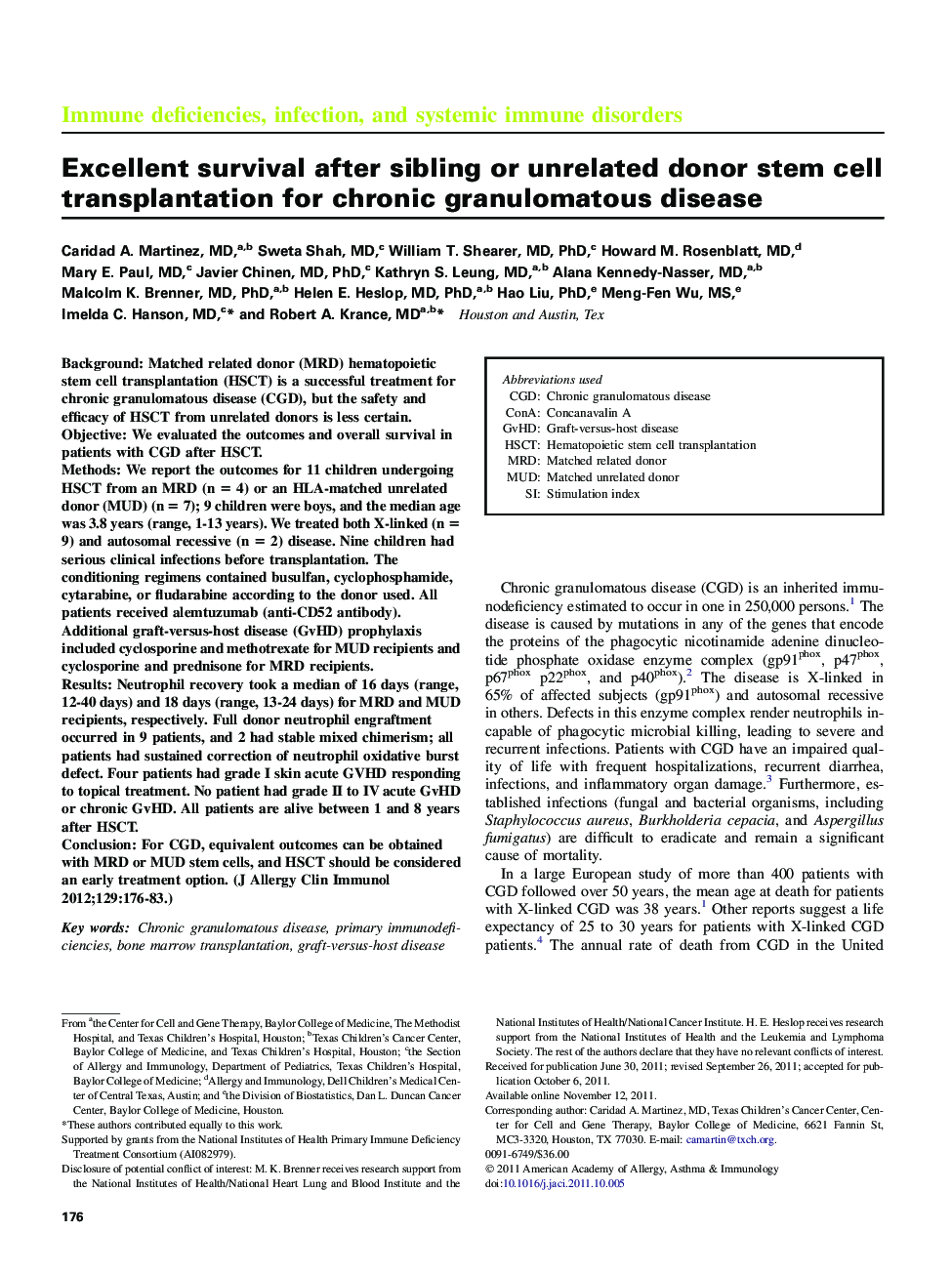| Article ID | Journal | Published Year | Pages | File Type |
|---|---|---|---|---|
| 3198979 | Journal of Allergy and Clinical Immunology | 2012 | 8 Pages |
BackgroundMatched related donor (MRD) hematopoietic stem cell transplantation (HSCT) is a successful treatment for chronic granulomatous disease (CGD), but the safety and efficacy of HSCT from unrelated donors is less certain.ObjectiveWe evaluated the outcomes and overall survival in patients with CGD after HSCT.MethodsWe report the outcomes for 11 children undergoing HSCT from an MRD (n = 4) or an HLA-matched unrelated donor (MUD) (n = 7); 9 children were boys, and the median age was 3.8 years (range, 1-13 years). We treated both X-linked (n = 9) and autosomal recessive (n = 2) disease. Nine children had serious clinical infections before transplantation. The conditioning regimens contained busulfan, cyclophosphamide, cytarabine, or fludarabine according to the donor used. All patients received alemtuzumab (anti-CD52 antibody). Additional graft-versus-host disease (GvHD) prophylaxis included cyclosporine and methotrexate for MUD recipients and cyclosporine and prednisone for MRD recipients.ResultsNeutrophil recovery took a median of 16 days (range, 12-40 days) and 18 days (range, 13-24 days) for MRD and MUD recipients, respectively. Full donor neutrophil engraftment occurred in 9 patients, and 2 had stable mixed chimerism; all patients had sustained correction of neutrophil oxidative burst defect. Four patients had grade I skin acute GVHD responding to topical treatment. No patient had grade II to IV acute GvHD or chronic GvHD. All patients are alive between 1 and 8 years after HSCT.ConclusionFor CGD, equivalent outcomes can be obtained with MRD or MUD stem cells, and HSCT should be considered an early treatment option.
